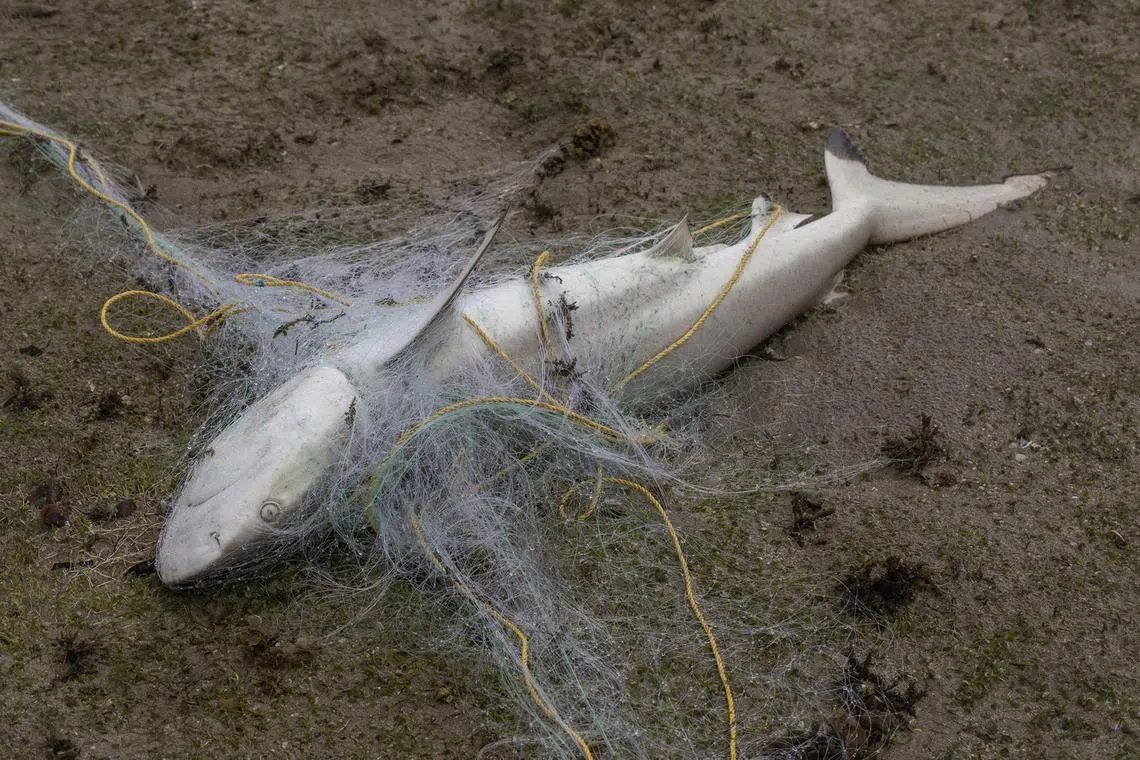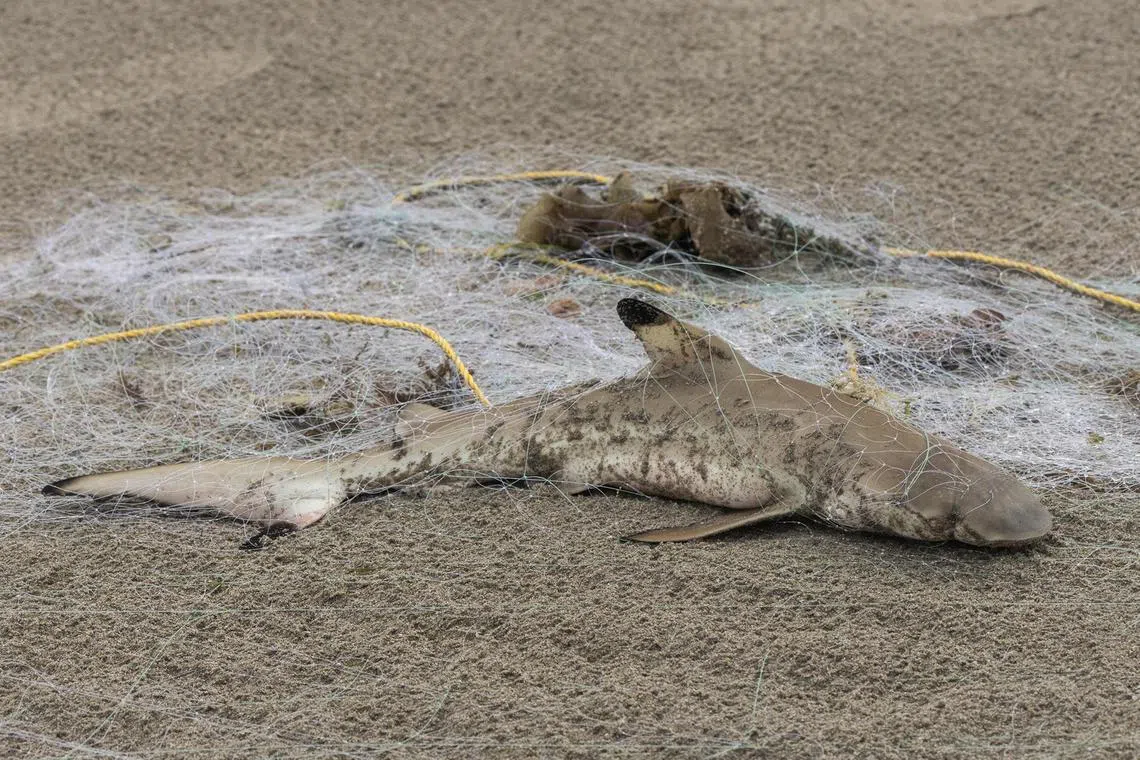Abandoned fishing net on Pulau Semakau kills 14 endangered blacktip reef sharks
Sign up now: Get ST's newsletters delivered to your inbox

One of the 14 blacktip reef sharks killed by a gill net found by researchers on Pulau Semakau.
PHOTO: MARCUS NG
Follow topic:
SINGAPORE – An abandoned fishing net on Pulau Semakau has caused the deaths of 14 blacktip reef sharks, which are threatened with extinction in Singapore.
Carcasses of the reef fish and other marine life, including what is suspected to be a critically endangered honeycomb whipray, were discovered ensnared in a 300m-long gill net on Tuesday morning by researchers.
Marine enthusiast Ria Tan, who posted about the incident on Facebook, said the nets were discovered at about 8am. Ms Tan and a few marine enthusiasts had journeyed to the south of Pulau Semakau to survey the biodiversity of the shore.
Among the 14 endangered sharks caught, one was about 1m long and the rest were around 50cm.
She said: “The law prohibits others from removing the nets. The only thing I could do is to take a picture of the net.”
Under the Fisheries Act, which regulates the fishing industry here, commercially licensed fisheries are permitted to lay gill nets outside protected areas, so damaging the fishing implements can be illegal.
In 2021, an abandoned gill net that killed at least 12 young blacktip reef sharks
The spider-web-like nets have fine filaments that render them virtually invisible to marine life, allowing them to catch everything in their path. When abandoned, the nets become death traps as no one is around to release the animals that get entangled.
Citing Tuesday’s incident, a spokesman for conservation group Marine Stewards said: “Marine nets and traps can be indiscriminate killers, meaning they catch and kill various marine life whether those animals were the target species.”
The spokesman added that the organisation has engaged with the fishing community here to promote sustainable practices such as rod-and-line methods and releasing by-catch.

Among the 14 endangered sharks caught, one was about 1m long and the rest were around 50cm.
PHOTO: MARCUS NG
According to a 2022 study by National University of Singapore (NUS) scientists, fishing lines and nets are the most common abandoned, lost or discarded fishing gear found here, with plastic polymer nets found to trap the most diverse kinds of marine life.
The NUS report found that more than 25,500 pieces of abandoned or lost fishing gear – including fragmented ones – were left on beaches, intertidal zones and mangroves in Singapore, among other coastal areas, from 2000 to 2019.
More than half of all the gear was found in marine reserves and protected shorelines. The gear studied ensnared more than 1,050 marine animals, of which 34 per cent were found dead.
The most common species trapped included the mangrove and coastal horseshoe crabs, ray-finned fishes and various crustaceans.

A ray, possibly a honeycomb whipray, was found dead in a 300m gill net.
PHOTO: MARCUS NG
Rescuing live animals trapped in these nets, however, is complicated because it is legal to use the implements to fish outside of waters under the National Parks Board (NParks).
Net fishing in 12 coastal parks and areas managed by NParks, including East Coast Park, is forbidden because of the damage that the method has on marine life.
In this case, Pulau Semakau, where the sharks were found, does not fall under its management, said Dr Neo Mei Lin, a marine ecologist with the NUS Tropical Marine Science Institute.

